Stone Sources
Some blue stone is prone to frost damage - notably stone from Applethwaite Common area near Windermere
Each valley and each quarry produces different stone with different appearance and qualities (see BGS link centre)
Stone Quality Varies


Lake District Stonework
Stone Walls, Walling and Slating
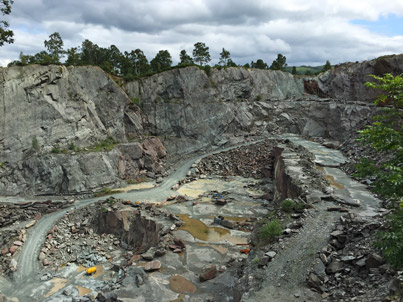
Elterwater quarry, sadly recently closed, was worked by Burlington Slate - a very attractive milky blue/green slate
Resources
British Geological Survey has some excellent data in map and spread-sheet format of geological detail and list of quarries and stones of Cumbria for free to download from link below
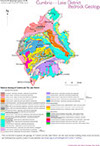
To the many visitors to this area no doubt the drystone field walls and the apparently similar house walls all look much the same.
In fact even when built there were already differences in construction between a field wall and a house or outbuilding wall.
The general construction of an outer layer, an inner layer and 'through' stones to bind the two layers together seems to have emerged in the 17th C. The oldest walls I see are generally thicker and rougher than the 17th C versions.
From observation a general standard seems to have emerged during the 18th C of having house and barn walls approximately 2 feet (603 mm) thick overall plus plaster internally on house walls with small outbuildings and internal walls at 1 foot (304 mm) or 1 foot 6 inch (450 mm).
It is thought that clay was sometimes used in building walls to bed the inner stone walls but set well back from the external face to avoid being washed out by rain. Clay was eventually replaced with lime mortar during the 17th C but the practice of keeping it well back from the external face persisted.
Generally the older the building the bigger the stones at the base of walls it seems (or sometimes the builders set off from a large cobble (boulder) in a field or a shelf of rock (leading to problems if you decided to lower the floor of the building).
Despite the massive waste heaps from past mining and quarrying of slate obtaining building and roofing slate has become very tricky. Honister mine, beyond the end of Borrowdale still produces a high quality green slate but it is expensive. 2nd hand Westmorland Green is often hard to find nowadays in any quantity. 'Diminished courses' - where rows of slates become shorter towards the apex of the roof - is a local feature of slate roofs and often quoted in Conditions on planning approvals. Lack of suitable slate leads some roofers to skimp on the number of courses diminishing or avoid the detail altogether, risking an argument with knowledgeable locals and the LDNPA enforcement team.
Walling stone tends to come from leased areas of old workings and spoil heaps such as at Hodge Close, off the road to Coniston from Ambleside. We are fortunate to still have skilled wallers working locally.
Burlington Slate own or control most of the slate quarries in the area apart from Honister. They offer a range of stone colours and finishes but probably best to talk to them about availability if you need a particular stone or slate well in advance of building work.
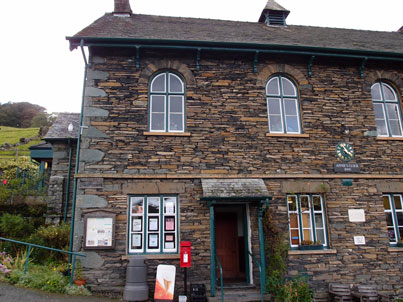
Reading room conversion to shop and café at Troutbeck. Note the pyrites in the slatestone which gives it a golden look
How to prop local stone walls at new or altered gaps. This sort of walling a bit less troublesome than more rounded stones.
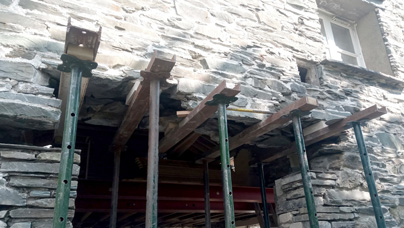
A closer look at the stones being supported. There are front and back layers of stone wall with some 'through' stones between.
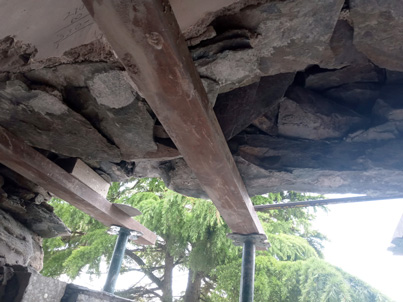
Site Map
|
Planning Maze
|
|
Trade Gadgets
CDM2015
|
|


William Sutherland rias riba
Chartered Architect
Director
Cluan, Rydal Road, Ambleside LA22 9BA
Tel: 015394 34489

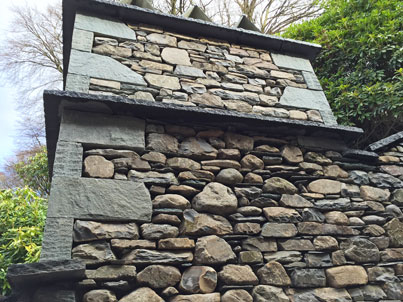
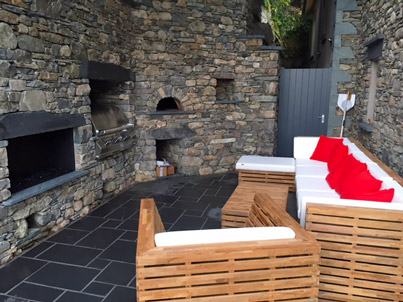
-grasmere_403x302x70.jpg?crc=4151609895)



